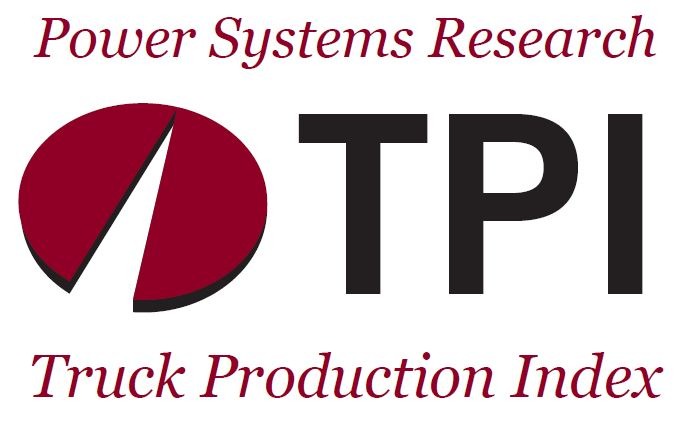
St. Paul, MN — The Power Systems Research Truck Production Index (PSR-TPI) increased from 36 to 109, or 203%, for the three-month period ended Oct. 31, 2020, from the Q2 2020. The year-over-year (Q3 2019 to Q3 2020) loss for the PSR-TPI was, 117 to 109, or 6.8%.
The PSR-TPI measures truck production globally and across six regions: North America, China, Europe, South America, Japan & Korea and Emerging Markets.
This data comes from OE Link™, the proprietary database maintained by Power Systems Research.
All Regions: Most of the regions experienced a sharp decline in production during the late first quarter into the second quarter but for the most part, demand and production has stabilized. However, demand in India continues to struggle for several reasons including the virus. China is on track to have a record year for medium and heavy truck production.
Global Index: In general, global demand for medium and heavy commercial vehicles will decline this year is expected to gradually improve during the next few years as the pandemic wanes.
North America: While commercial vehicle demand plummeted earlier this year, primarily driven by the impact of the Coronavirus, demand has since rebounded, but not to the levels of last year. While there is a threat of the virus making a resurgence in Q4 2020, PSR believes this will not cause another sharp drop in demand but rather a slowdown in sales. Much will also depend on the government’s implementation of an economic stimulus package which is still up in the air at the time of this writing.
Europe: During the first half of this year, medium and heavy truck registrations in the EU declined by 43% compared to the first half of 2019; bus registrations declined by 35%. While we believe demand has stabilized, sales are expected to be down significantly over last year. Export demand also has declined sharply this year, primarily due to the impact of the coronavirus on the global markets.
South Asia: Coupled with price hikes in BSVI era in India, increasing fuel prices (13% increase from January to August), economic recession, lower freight demand, driver and labor shortages (loading/un-loading of goods) – the headwinds in MHCV industry continue and the year 2020 will go down as the worst year for the MHCV industry. Driven by social-distancing and work-from-home policies, muted or no demand for buses from the education sector and office staff, the bus segment is also one of the worst hit with our estimates of only 10-15% in-service bus fleets being operational. The improving rail freight infrastructure, the proposed vehicle extension policy, shifting focus on the used-truck market and under-utilization of in-service vehicle population are likely to further dampen the MHCV outlook in the mid-term.
South America: Through the first eight months of the year, medium and heavy truck production in Brazil declined by 36.5% while bus production declined by 55.6% compared to 2019. While there has been some improvement during the past few months, domestic and export demand will continue to be soft throughout the remainder of this year. Production was down sharply in April as most of the OEM’s and suppliers shut down production facilities as a result of the virus outbreak.
Japan/Korea: Much like the rest of the world, medium and heavy vehicle demand declined sharply in late Q1 and into Q2 as a direct result of the Coronavirus pandemic. While demand has since stabilized in both the domestic and export markets, it will still be a few years before vehicle replacement levels improve to more historic levels.
Greater China: After declining sharply in February and into March, medium and heavy truck production has been extremely strong this year. Much of this has been driven by the government mandate to eliminate the current Euro III and earlier emission complaint trucks and replace these with new Euro V vehicles.
The plan is to have this completed by the end of 2020. This along with stricter punishment of overload vehicles not only in big cities, but also to some small cities and rural areas. As a result of this, PSR expected demand to decline during the next few years.
The next update of the Power Systems Research TPI will be in January 2021 and will reflect changes in the TPI during Q4 2020. PSR
Jim Downey is vice president – global data products at Power Systems Research
Chris Fisher is the senior commercial vehicle analyst at Power Systems Research


